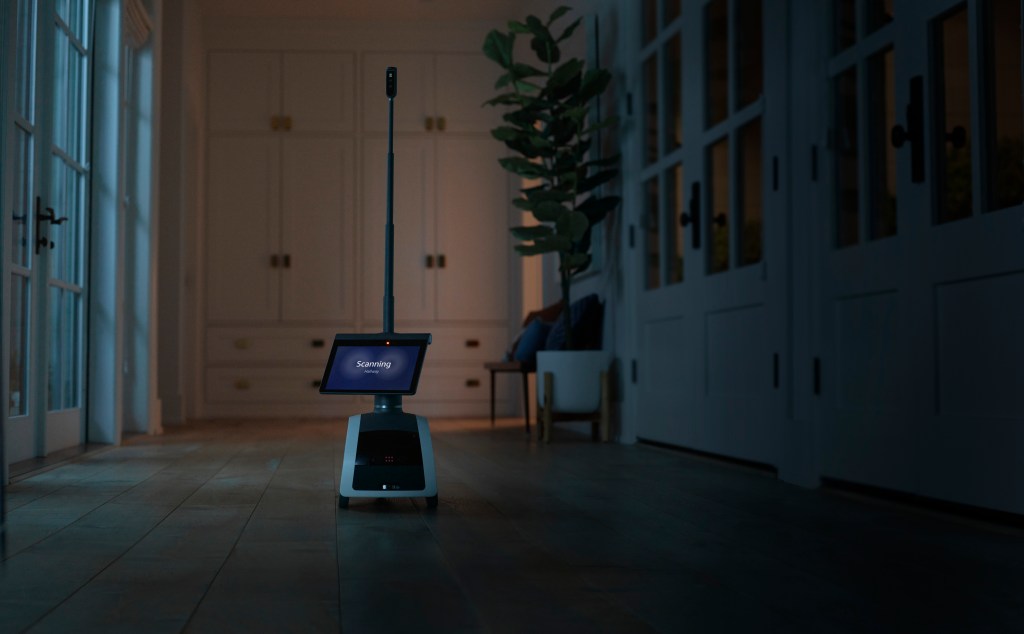Few tech demos can match the spectacle of robotics. Even as the field grows increasingly prevalent in a broad range of industrial workplaces, mechatronics doing impressive things will never cease to amaze. For many, the mere presence of a robot is shorthand for the future, and for big electronics firms, it’s a quick and simple method to let shareholders and customers know your company is still innovating.
Whether or not those robots actually lead to salable products is almost beside the point. So long as you have other real products coming to market in the next few months, those futuristic demos can disappear for all anyone cares. Remember that robot chef Samsung “debuted” at CES 2020? It was a month or so before COVID swallowed the world, so probably not.
But it did what it needed to and — to the best of our knowledge — went away. At least the “return” of Ballie demonstrated that Samsung hasn’t lost interest in the home robot. The spherical home patrolling ’bot, which now contains a projector, is — at the very least — a more realistic vision for home robots near-term. While I certainly wouldn’t bet good money that the thing will ever make it to market here, Korea or anywhere, Ballie is a perfectly achievable goal.
Whether it’s a good goal is another question entirely. I firmly believe that the home robot has life beyond Roomba. So why — after 20+ years — do we have little more to show for it than a bunch of robot vacuums? It’s one of those simple questions with deceptively complex answers. Functionality is a big piece. Most robots in this world are single purpose. They’re designed to do one specific thing well over and over until they can’t anymore.
After years of banging their collective heads against the wall, iRobot hit pay dirt with the first Roomba in late 2002. It was an idea so good that no one has topped it since. Instead, conservatively tens of millions of dollars go into R&D across countless companies aimed at building a better robot vacuum. And yes, the Roombas of today are vast improvements over their ancestors. They’re smarter, have a better sense of space, figured out how to mop and — most importantly — won’t track animal shit across your carpet.
Security has long been floated as a second killer application for the home. The idea makes enough sense on the face of it. Why settle for a Ring cam when you can get a Ring Cam on wheels? (Granted there are plenty of good reasons for this, but that’s beside the point.) That was the main selling point behind Amazon’s Astro. That the robot hasn’t been a rousing success is due in no small part to limited functionality combined with a prohibitive price point. It’s a combination that Ballie will almost certainly suffer from, should it ever actually come to market.

Unfortunately, I was only able to take two meetings at this year’s CES due to illness. One, however, happens to be very relevant for this specific conversation. Matic is — for most intents and purposes — yet another robot vacuum looking to make a name in a very crowded space. The reason we covered the company’s November launch and why I agreed to meet with them this week is a combination of their unique approach to the category in addition to its founders’ pedigrees and financial backing from knowledgeable sources.
What really jumped out at me during our conversation is that the company has effectively built a home robotics platform that appears to be pretty good at vacuuming and mopping. I’ve been thinking of it a bit like Nvidia’s Nova Carter mobile reference robot. In the process of cleaning homes, you get better and better at navigating using the on-board vision system. Should Matic or someone else master the home equivalent to level 5 autonomy, you’ve got yourself a great foundation for additional functionality.
But what, precisely, will the silver bullet be? The smart money is on another chore people hate doing, but the current factory still presents too many limitations. An affordable, robust mobile grasper is another one of those surprisingly complex issues that a lot of people have been working on for a long time. But as with the world of autonomous mobile warehouse robotics, it’s easy to imagine how attaching a gripper to one opens a new world of functionality.
You would probably want that robot to reach high places and traverse stairs. You can start with a drone foundation — that addresses the question of mobility well — but the payloads, and therefore functionality, is still very limited if you don’t want something the size of a Honda Civic floating around your home.
So naturally, we end up where we often do these days. You start by attaching arms, then you bring legs. Suddenly you’re looking at something that looks a lot more like yourself. This is a big part of the reason many roboticists just can’t quit humanoids. Even more so than factories and warehouses, our homes are built for ourselves, so it tracks that we would build something that looks like us to navigate those spaces.
Of course, no one is ready to have a serious conversation about humanoids in the home just yet. There have been plenty of unserious ones, of course, but no one is expecting a commercially available general-purpose humanoid home robot this year. Again, there are several reasons. The first and most obvious is price. Enterprise still makes way more sense in the short term. Corporations have deep pockets and will spend a lot if they believe it will save them in the end. The demand for industrial automation has also been proven out time and again.
Warehouses are also just generally easier to navigate than homes. At the end of the day, they are significantly more structured and uniform. Also, each one of these robots is going to enter the work force with a single job. They’ll do it repetitively until they perfect it and then maybe learn another job. In most cases in most factories and warehouses, however, there are plenty of repetitive around-the-clock jobs to keep these systems busy for a long time. After the Roomba, consumers are going to demand home robots that can do more.

The other big question mark in all of this is generative AI. It was prevalent at CES to the point of almost losing all meaning, and there are days when I’m annoyed with myself for adding to that chorus. But generative AI will have a profound impact on robotics, full stop. There are a lot of different venues, but at least two — learning and natural language — lead back to eventual general-purpose systems. The bad news, however, is that optimistic projections put that roadmap out about five years, minimum.
This was a big year for robotics at CES. At same time, we frustratingly don’t feel any closer to ubiquitous home robots than we were this same time last year. That’s not to say the near-term roadmap is devoid of interesting plays. For something more realistic than a chicken in every pot and two Teslabots in every garage, we should examine the age tech space. AARP’s accelerator (who, along with Samsung was the other meeting I was able to take this year) is doing fine work to shine a spotlight on this category.
Japan invariably comes up in every conversation around the category, because the country has been out ahead of the rest of the world, owing to its own aging population. Robots are a big part of that. So far, they seem to be less prevalent in the broader age tech category, but there’s a lot of room to navigate. Most of these devices are aimed at finding ways for older people to continue living independently. It’s easy to see the role robots can — and will — play.
In past years, we’ve highlighted Labrador’s assistive cart system. This year, we saw the return of the desktop ElliQ robot assistant. If I was looking for a way to get robots into the home right now, this is exactly the demographic I would be targeting. And not to be too crass about the topic, but Baby Boomers currently control 70% of the country’s disposable income. Not a bad place to start, if you ask me.































Comment